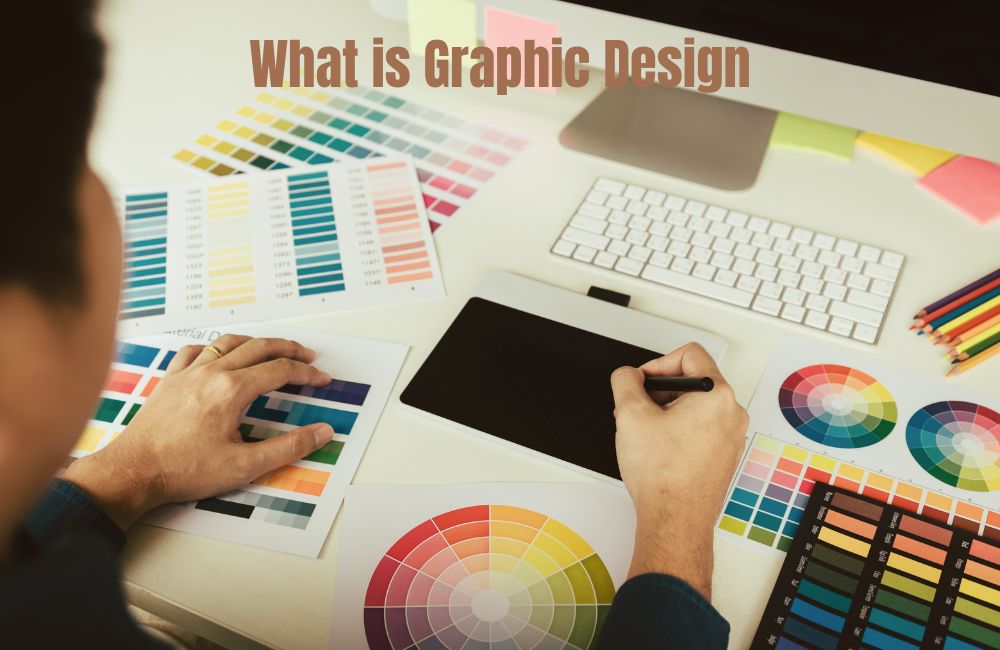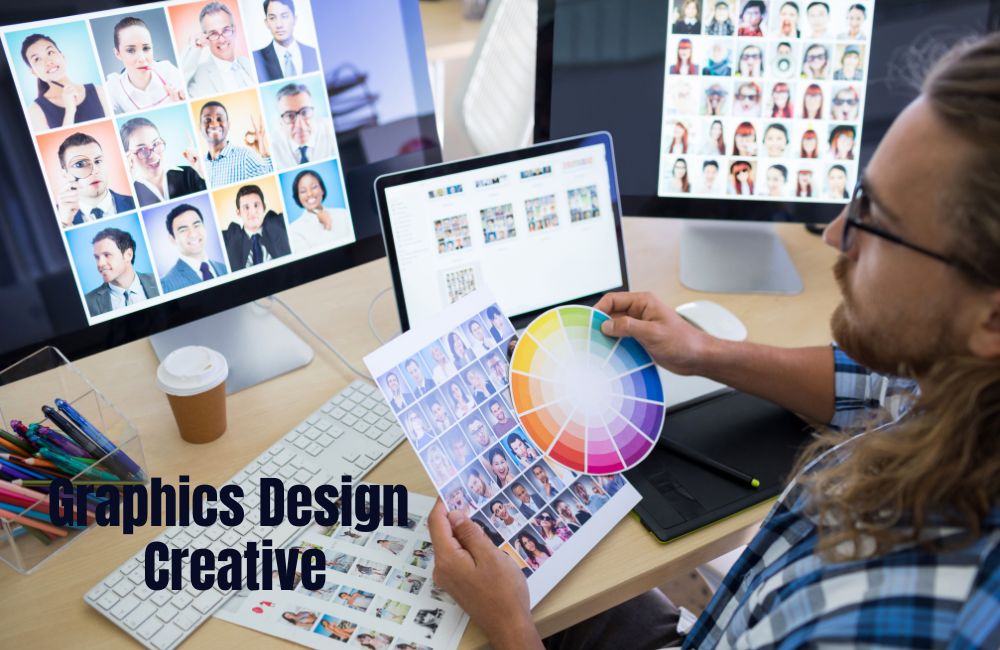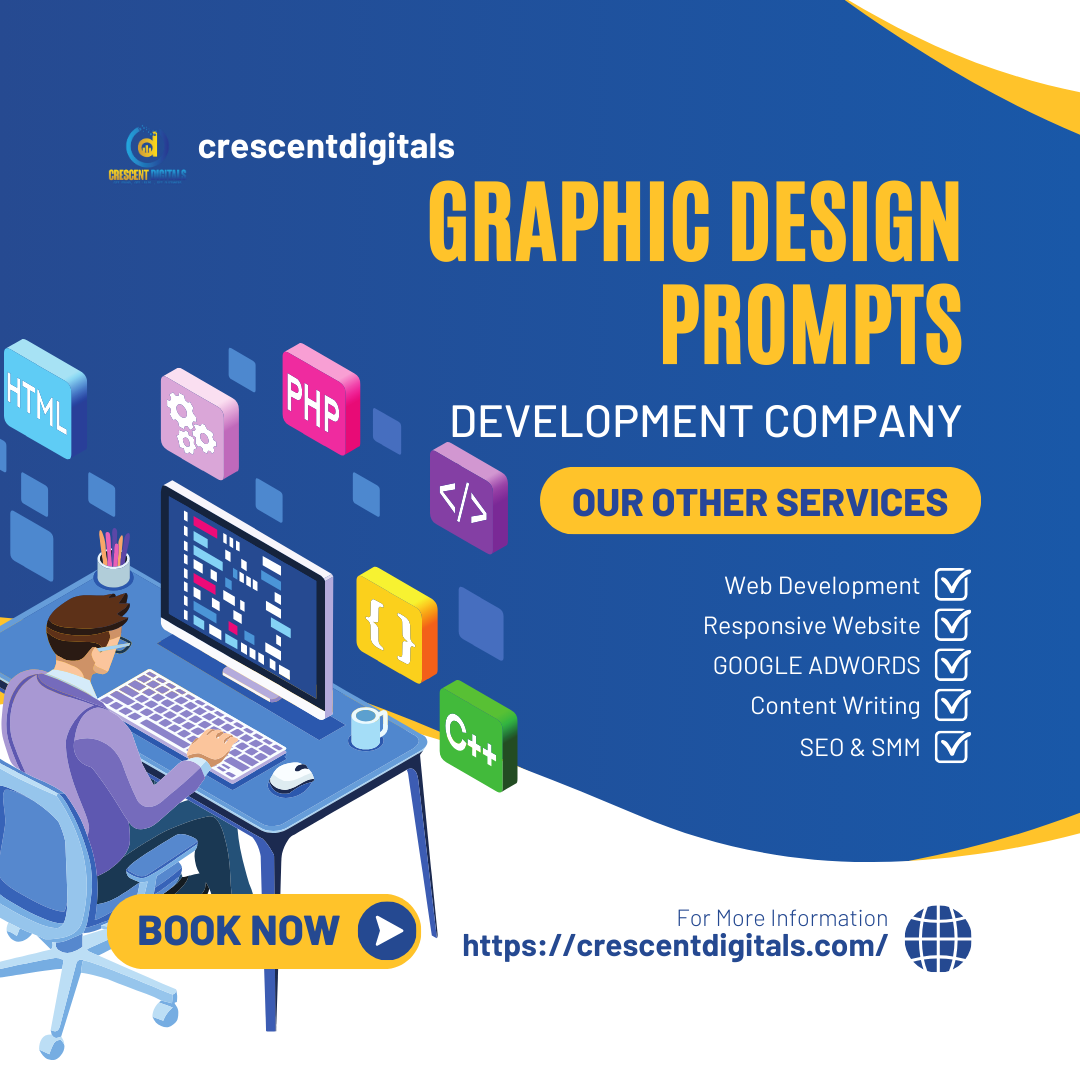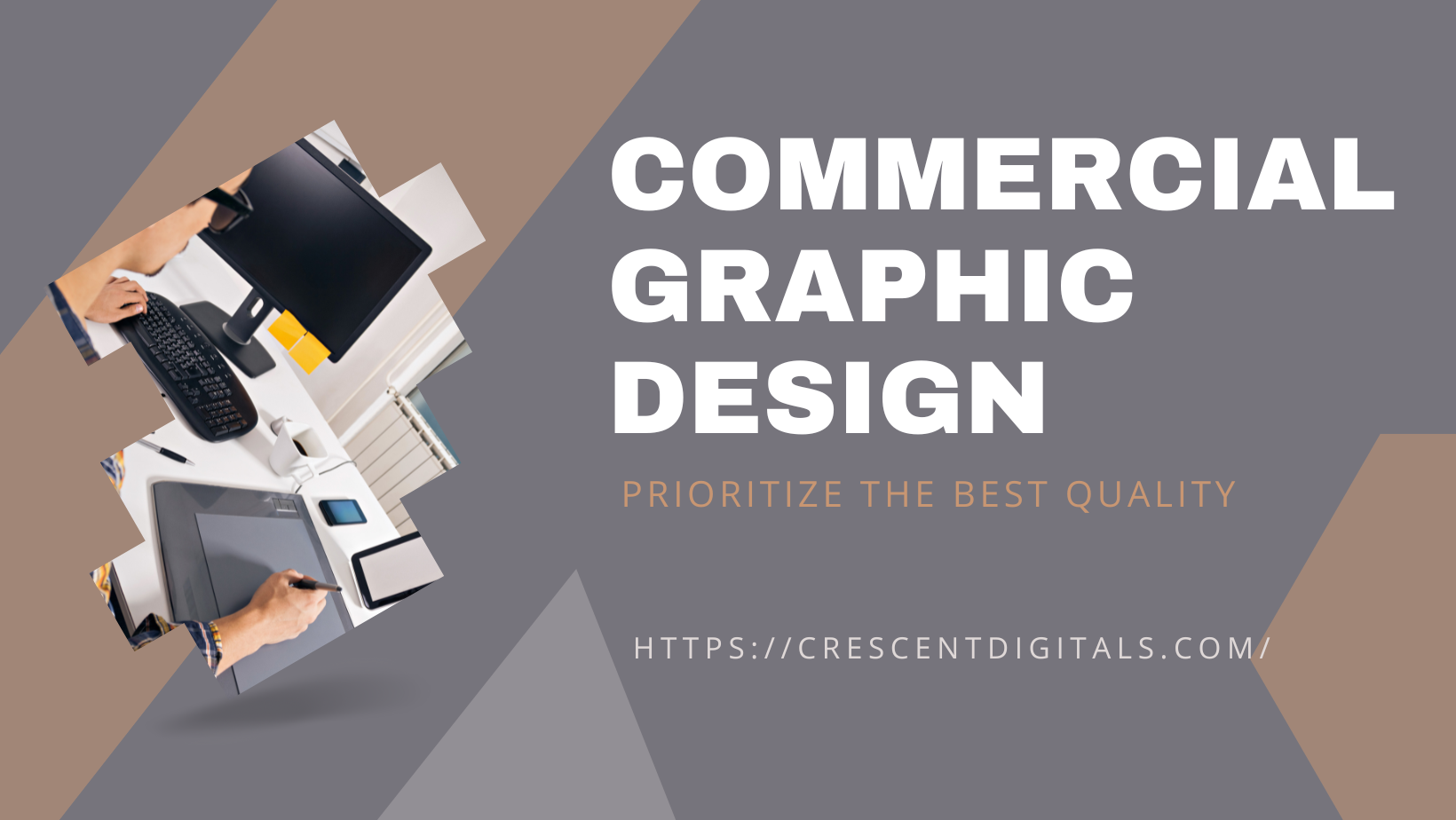What is Graphic Design? Graphic design is the art of visually communicating ideas through images and typography. It is a creative process that involves combining text and graphics to create visual elements for various media.
In today’s digital age, graphic design plays a crucial role in branding, advertising, and communication. From logos and brochures to websites and social media posts, graphic design is essential in conveying messages effectively and engaging viewers. A skilled graphic designer uses tools like Adobe Illustrator and Photoshop to design visually appealing layouts that resonate with the target audience.
By understanding design principles, color theory, and typography, a graphic designer can bring creativity and professionalism to any project. Whether creating a business card or a billboard, graphic design is the key to making a lasting impression in the competitive market.
The Origins Of Graphic Design
The origins of graphic design can be traced back to early civilizations, where visual communication played a crucial role in conveying messages and information through images and symbols. Graphic design encompasses the art of combining text, images, and layout to communicate ideas efficiently and effectively to an audience.
This form of visual communication has evolved, adapting to technological advancements and cultural changes, shaping the way we perceive and interact with the world around us.
Early Forms Of Visual Communication
Visual communication goes back to ancient civilizations, using symbols and images to convey messages.
Hieroglyphics in Egypt and cave paintings show early graphic design elements.
Historical manuscripts and illuminated texts demonstrate the artistry of early visual communication.
Evolution Of Graphic Design
-
- The Industrial Revolution marked the boom of graphic design with printing press technology. Advertisement posters and brand logos emerged during the industrialization era.
- The digital revolution introduced computers and software, transforming graphic design processes.
Basic Principles Of Graphic Design
Understanding the basic principles of graphic-design-niches graphic design is essential for creating visually appealing and effective designs. By mastering these core concepts, designers can communicate messages clearly and engage audiences effectively.
Balance And Symmetry
Balance ensures visual stability and harmony in a design. Symmetry creates a sense of order and equilibrium. Incorporating balance and symmetry in graphic design helps guide the viewer’s eye and creates a pleasing composition.Hierarchy And Emphasis
Establishing a clear hierarchy organizes content and guides the viewer through the design. Using hierarchy and emphasis effectively helps to highlight key information and create visual interest.
Color Theory
Color theory plays a crucial role in graphic design by conveying emotions, establishing visual hierarchy, and creating a cohesive look. Understanding the psychology of colors is essential in designing impactful visuals.
Typography
Typography involves selecting and arranging text elements to enhance readability and communicate information effectively. Choosing appropriate fonts, sizes, and spacing is vital in creating visually appealing designs.
Key Elements In Graphic Design
Graphic design encompasses several key elements that play a crucial role in creating visually appealing and effective designs. From images and icons to layout and composition, each element contributes to the overall impact of a design. Let’s explore these key elements in graphic design:
Images And Icons
Images and icons are fundamental components of graphic design, as they help visually communicate messages and concepts. Whether it’s photographs, illustrations, or icons, the use of visually compelling images is essential for capturing the audience’s attention and conveying the intended message. The choice of imagery and icons can significantly influence the overall design’s effectiveness in conveying a brand’s identity or communicating information.
Layout And Composition
The layout and composition of a design refer to the organization and arrangement of visual elements within a given space. How images, text, and other graphic elements are structured and placed impacts the overall flow and readability of the design. Effective layout and composition not only enhance visual appeal but also contribute to better message delivery and user experience, whether in print or digital media.
Shapes And Symbols
Shapes and symbols are powerful visual tools that possess the ability to convey specific meanings and create instant recognition. Whether it’s geometric shapes, abstract symbols, or culturally significant icons, their use can evoke emotions, communicate ideas, and create strong associations. Incorporating meaningful shapes and symbols within a design can enrich its visual language and strengthen its ability to resonate with the target audience.
The Role Of Graphic Design In Branding
Graphic design plays a crucial role in branding as it visually communicates a brand’s identity, values, and messaging. Through the use of colors, fonts, and imagery, graphic design helps establish a strong brand presence and fosters recognition among target audiences.
Good graphic design is essential for creating a memorable and impactful brand image.
Creating Brand Identity
Graphic design plays a crucial role in creating brand identity for businesses. It encompasses the visual elements that distinguish a brand and make it instantly recognizable. From logo design to color palette selection and typography choice, graphics use their artistic skills and creative vision to craft a brand’s visual identity. Through well-designed and consistent branding, businesses can establish a strong and memorable brand image that resonates with their target audience.
Visual Communication Of Brand Values
Another important role of graphic design in branding is the visual communication of brand values. It is the responsibility of graphic designers to visually convey the core values and personality of a brand through their designs. This involves strategically choosing visual elements that align with the brand’s purpose and positioning.
By using appropriate colors, imagery, and design elements, graphic designers can evoke specific emotions and create a visual language that effectively communicates the brand’s values to the audience. The visual representation of brand values helps businesses build trust, establish credibility, and connect with their target market.
Graphic design, therefore, plays a vital role in shaping the perception and identity of a brand. It not only helps businesses stand out from the competition, but it also contributes to building a strong and consistent brand presence across various mediums and channels. Whether it’s through or traditional marketing materials, the power of graphic design in branding is undeniable.
Graphic Design In Marketing And Advertising
Graphic design plays a crucial role in marketing and advertising. It is the visual language that captures the attention of target audiences and effectively communicates messages. From eye-catching logos to compelling advertisements, graphic design in marketing and advertising is used to leave a lasting impression and drive consumer engagement.
Effectiveness Of Visual Campaigns
In the fast-paced world of marketing and advertising, the effectiveness of visual campaigns cannot be underestimated. Visually appealing graphics have the power to captivate and engage audiences, leaving a lasting impact. By using compelling imagery, creative layouts, and vibrant colors, graphic design enables brands to grab attention in a crowded marketplace and differentiate themselves from competitors.
- Visually appealing graphics
- Creative layouts
- Vibrant colors
Engaging Target Audiences
Graphic design is not only about making things look good; it is also about understanding the target audience and tailoring designs to resonate with them. Through thoughtful design choices, graphic designers can evoke emotions, elicit desired responses, and forge connections with consumers. By using the right typography, color schemes, and imagery, graphic design captures the essence of a brand and helps establish a meaningful relationship with its target audience.</p>
- Thoughtful design choices
- Evoke emotions
- Ellicit desired responses
- Forge connections with consumers
The Intersection Of Graphic Design And User Experience
Graphic design, at its core, is the art of combining visual elements to communicate a message. The purpose of graphic design extends beyond aesthetics, playing a crucial role in shaping user experiences. The intersection of graphic design and user experience is where creativity meets functionality, and aesthetics seamlessly merge with usability. In this section, we’ll delve into how graphic design enhances user interface, incorporates design thinking, and elevates overall user experience.
Enhancing User Interface
Graphic design plays a pivotal role in enhancing user interface (UI) by creating visually appealing and intuitive designs. Through effective use of colors, typography, and visual elements, graphic designers can improve the overall look and feel of a digital product. Consistency, hierarchy, and clarity are key principles that guide the graphic design process. These principles ensure that the UI design is not only visually engaging but also easy to navigate for users, ultimately leading to a positive user experience.
Incorporating Design Thinking
Integrating design thinking into the graphic design process enables designers to understand users’ needs and preferences. By conducting thorough research and empathizing with the target audience, designers can create designs that resonate with users on an emotional level.
Design thinking empowers graphic designers to solve complex problems by placing the user at the center of the design process. This user-centric approach fosters the creation of innovative and impactful designs that address the specific needs of the target audience. Through the process of exploration, ideation, and prototyping, design thinking ensures that graphic design aligns with user experience objectives.
The Influence Of Graphic Design In Web Design
The Influence of Graphic Design on Interactive And Dynamic Visual Elements
In web design, interactive and dynamic visual elements enhance user engagement. These elements help keep visitors on a site longer and</strong> encourage interaction.</strong></strong>
Creating Memorable User Experiences
Graphic design in web design focuses on creating memorable user experiences that resonate with visitors. It includes intuitive navigation and visually appealing layouts.

Credit: www.aiinhollywood.com
Graphic Design And Social Media
Graphic design is the art of creating visual content to communicate messages effectively. When it comes to social media, graphic design plays a crucial role in capturing the audience’s attention and conveying brand messages creatively. Incorporating graphic design in social media marketing can enhance brand visibility and engagement.
Graphic Design and Social Media Social media has revolutionized communication, creating a visual-oriented landscape for brands to thrive.
Visual Storytelling
Effective graphic design on social media platforms weaves compelling narratives through visuals.</p>
Brand Visibility And Recognition
Eye-catching graphics boost brand recognition and visibility on social media. Graphic Design and Social Media Creating visually appealing and engaging content is crucial for success on various social media platforms.
Visual Storytelling
Compelling visuals tell a more engaging story on social media. Brand Visibility and Recognition Distinctive designs enhance brand recognition and visibility.
The Creative Process In Graphic Design
The Creative Process in Graphic Design
Graphic design is much more than just creating visually appealing images. It involves a structured process of transforming ideas into powerful visual communication. The creative process in graphic design encompasses various stages, each crucial to the development of the final product. Let’s delve into the three key stages of this process.
Research And Inspiration
- In this initial phase, graphic designers delve into understanding the project requirements, target audience, and competition.
- They gather inspiration through researching trends, historical references, and cultural influences that relate to the project.
Concept Development
- Once armed with knowledge and inspiration, designers ideate and brainstorm concepts that align with the project brief and resonate with the audience.
- They create sketches and rough drafts to visualize the concepts and get feedback from clients or team members.
Execution And Iteration
- Upon finalizing the concept, the designers proceed with the execution, bringing the ideas to life using digital tools and software.
- The design undergoes multiple iterations and revisions based on feedback from stakeholders until the final product is achieved.
Challenges And Trends In Graphic Design
Graphic design encompasses visual communication and problem-solving through the use of typography, photography, and illustration. The field faces challenges in keeping up with evolving technology and staying ahead of design trends. Understanding the latest design software and adapting to new visual concepts are crucial for graphic designers to remain competitive.
Adapting To Technological Advances
In the fast-paced digital world we live in, graphic designers constantly face the challenge of adapting to the latest technological advances. With new software, tools, and platforms being introduced regularly, designers must stay up-to-date to remain competitive in their field.
Designers must be willing to embrace new technologies and continuously learn and refine their skills to meet the growing demands of clients and consumers. For example, mastering design software like Adobe Creative Suite or learning new techniques such as responsive design for various devices is essential in today’s evolving graphic design landscape.
Sustainability And Ethical Design Practices
As environmental awareness continues to grow, so does the demand for sustainable and ethical design practices. Graphic designers are now expected to consider the impact of their work on the planet and society at large. This shift has led to a rise in eco-friendly design choices, such as using recycled materials or reducing waste in the production process.
Additionally, ethical design practices encompass considerations like diversity, inclusivity, and representation. Designers are now challenged to create designs that not only look aesthetically pleasing but also align with the values of sustainability, inclusivity, and social responsibility.
The Future Of Graphic Design
Graphic design is an ever-evolving field, constantly adapting to emerging technologies, trends, and consumer behaviors. As we look to the future, the landscape of graphic design promises exciting possibilities and new horizons. In this article, we will delve into two key aspects that will shape the future of graphic design: the impact of artificial intelligence and the expanding design boundaries.
Impact Of Artificial Intelligence
Artificial intelligence (AI) is revolutionizing various industries, and graphic design is no exception. With AI algorithms becoming increasingly sophisticated, designers now have access to powerful tools that enhance their creative process and streamline repetitive tasks. Using AI-powered software, designers can automate layout design, generate personalized graphics, and even predict trends.
Benefits of AI in graphic design:
-
- Efficient automation of repetitive tasks
- Improved accuracy and consistency in design
- Enhanced data analysis and pattern recognition
While AI offers immense potential, it is important to note that the human touch and creativity will always be irreplaceable. Designers will continue to play a crucial role in harnessing the capabilities of AI and using it as a tool to elevate their designs.</p>
Expanding Design Boundaries
Design is no longer limited to traditional mediums like print or the web. The future of graphic design will witness an expansion of boundaries, with designers exploring new platforms, mediums, and technologies to engage audiences in innovative ways.
Here are some exciting avenues where graphic design is expanding:
- Virtual Reality (VR) Design: VR offers a whole new realm for designers to create immersive and interactive experiences.
- Augmented Reality (AR) Design: AR combines digital elements with the real world, allowing designers to blend graphics seamlessly into the physical environment.
- User Interface (UI) Design:</strong> With the increasing integration of technology into everyday life, UI design will continue to be in high demand, ensuring seamless user experiences across devices and interfaces.
As graphic designers embrace these expanding horizons, they will need to continually evolve their skill sets and stay updated with emerging technologies to create impactful and relevant designs.
Frequently Asked Questions On What Is Graphic Design
What Is Graphic Design?
Graphic design is the visual communication and manipulation of images, text, and ideas to convey a message effectively.
Why Is Graphic Design Important?
Graphic design is important as it enhances branding, communicates messages, and improves user experience through engaging visuals.
How Can Graphic Design Benefit Businesses?
Graphic design can benefit businesses by creating a strong brand identity, attracting customers, and increasing sales through visually appealing marketing materials.
What Skills Do Graphic Designers Need?
Graphic designers need skills in creativity, communication, problem-solving, proficiency in design software, and typography, and an eye for aesthetics.
Can Anyone Become A Graphic Designer?
Anyone with a passion for design, creativity, and willingness to learn can become a graphic designer with proper training, practice, and dedication.
What Is The Difference Between Graphic Design And Visual Design?
Graphic design focuses on creating visual elements, while visual design combines various design disciplines to create a comprehensive user experience.
How Does Graphic Design Impact Web Design?
Graphic design plays a crucial role in web design by creating visually pleasing layouts, typography, and imagery that enhance user engagement and usability.
What Are The Common Software Used In Graphic Design?
Some popular software used in graphic design include Adobe Photoshop, Illustrator, InDesign, CorelDRAW, and Sketch.
Can Graphic Design Help In Social Media Marketing?
Yes, graphic design is vital in social media marketing by creating visually appealing content, infographics, and ad designs that capture the audience’s attention.
How Can I Improve My Graphic Design Skills?
Improving graphic design skills can be achieved through practice, learning from tutorials, staying updated with industry trends, and seeking feedback from experienced designers.
Conclusion of What is Graphic Desig
In sum, graphic design is a powerful tool for visual communication. From logos to websites, its impact is far-reaching and essential. Understanding its principles can enhance branding and create compelling content. By harnessing its capabilities, businesses can effectively engage with their target audience and stand out in a crowded marketplace.






